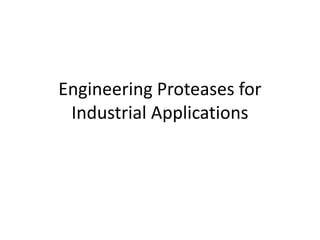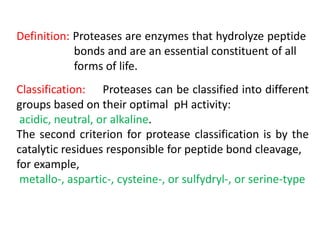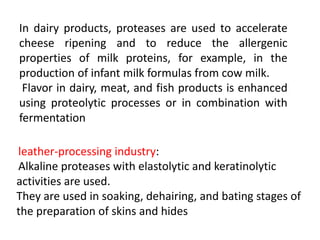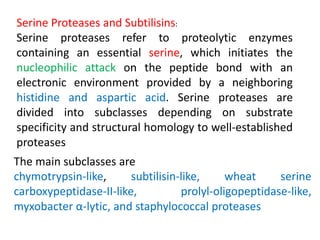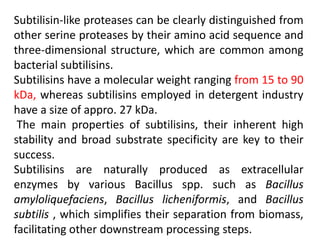The document discusses the use of proteases, especially subtilisin proteases, for industrial applications. It notes that over 60% of the global enzyme market is for proteases. Subtilisin proteases from Bacillus species are commonly used because they are stable and have broad substrate specificity. They are used in food processing, leather production, detergents, waste management and more. The mechanism of subtilisin proteases involves cleavage of peptide bonds via a catalytic triad of amino acids and stabilization of intermediates in the active site.
